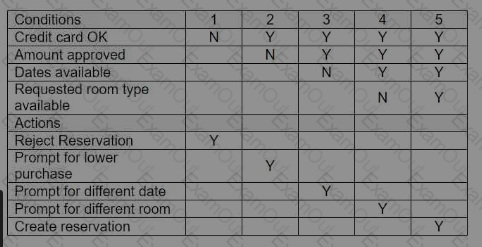You have been provided with the following decision table that was used for smoke testing the previous release of a set of hotel reservation software.

During discussions with the Test Manager you agreed that software behavior focused on the date of reservation, especially as midnight approaches, presented additonal risk.
You need to add more tests to provide more thorough coverage of the test conditions. Which of the following techniques should you use to design more tests?
Rather than developing an e-commerce product, management has decided to acquire a COTS package The e-commerce product needs to interface.
with backend applications such a finance, stock control and order delivery. You are asked to define a test plan for this project.
Given just the information in the scenario, which of the following software quality characteristics must be included in your test plan?
You are testing a dictionary lookup mobile application. When the user enters a word, the definition of that word is returned. This application will run on iOS and Android, on the latest versions
of the devices and the operating systems, plus all devices and operating system released in the last three years. The target users are university students.
Which of the following is a test condition that can be used to verify the usability quality characteristic?
What are ways in which classification trees support the application of pairwise testing?
a. They help to identify inputs to be used by the pairwise test technique
b. They show the combinations needed to cover all-pairs
c. They help to identify particular combinations of interest
d. They show both typical and atypical behavior
e. They show the expected results for the various test cases

